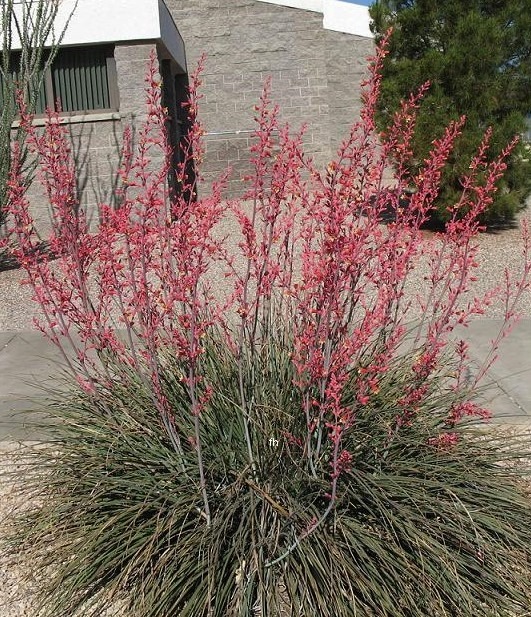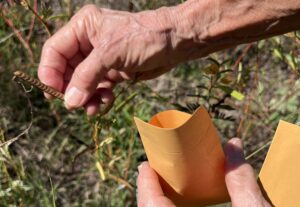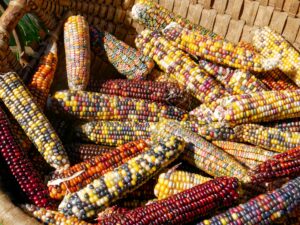
Many plants flower in May and into June, but as the temperatures rise, the blooms fade away and then stop altogether. Not red yucca (Hesperaloe parviflora.) This Texas native combines easy care and drought tolerance with reliable color all summer long.
“It’s one of the most carefree plants you can find,” says Sr. Horticulturist Steve Huddleston.
The evergreen, sword-shaped leaves of red yucca arch downward to form a mound that can reach more than three-feet tall and wide. The flowers bloom on a stalk that rises up to five feet. The plant is native to southwest Texas and northeast Mexico.
Red yucca thrives in most parts of Texas, tolerates any type of well-drained soil and shrugs off heat and drought. In fact, one of the few ways to harm a red yucca is to water it too much. Hummingbirds love the blossoms, which are usually red or coral, although a yellow variety is also available. It’s no wonder red yucca was named a Texas Superstar plant by the Texas A&M AgriLife Extension Service
Red yuccas thrive in full sun. They will endure some shade, althought they won’t flower as plentifully. Another advantage is that the leaves have soft points, rather than the sharp, spikey tips of some other yuccas and agaves. This makes them suitable for areas with pedestrian traffic. One final benefit of red yucca is that it isn’t particularly picky about when it is added to your garden, although spring or early summer are ideal.
“Red yuca makes a great container plant and is ideal for use around pools because of its clean habit,” says Huddleston.
Red yucca is widely available at nurseries and garden centers. Alongside the species plant, several new cultivars are available that offer a variety of colors and sizes. These include the following:
- ‘Brakelights Red.’ Features vivid red flowers and a compact growth habit, reaching about two feet tall and wide.
- ‘Desert Flamenco.’ The stalks of this variety grow numerous side branches that create waterfalls of showy, pinkish-orange flowers. The grey-green mound of leaves tops out at 30” tall and wide.
- ‘Desert Dusk.’ This selection has darker flowers than other varieties, reaching a velvety maroon. The upright stalk is also maroon.
- ‘Sandia Glow’. Brilliant watermelon-red blossom emerge from a plant with a mature size of about three feet wide and tall. The heaviest bloom period will be in spring, but often the plant blooms again in the fall.
- Hesperaloe ‘Pink Parade.’ This hybrid between red yucca and giant yucca is as durable and bullet-proof as both parents. The leaves are bright green, about an inch wide, and form an upright clump to 3’-4’ tall and wide. The 8-foot-tall flower spikes remain very straight, forming a linear pink line when planted in rows. Perfect for sunny, hot, reflected heat locations.
You can find red yuccas in bloom in many locations around the Garden. You’ll also see them used by urban landscapers. Their hardiness makes them ideal for locations few plants could tolerate, such as alongside highways.
“They are the featured plant in the raised beds separating northbound from southbound traffic on Central Expressway in Dallas,” says Huddleston. “They make a stunning show in this location and give drivers something glorious to look at. Red yuccas have also been planted on the grassy slopes on either side of the Sam Rayburn Tollway north of Dallas.”
Keep your eyes open for red yuccas all around the Metroplex, and consider which sunny spot in your garden could benefit from this superstar plant.






